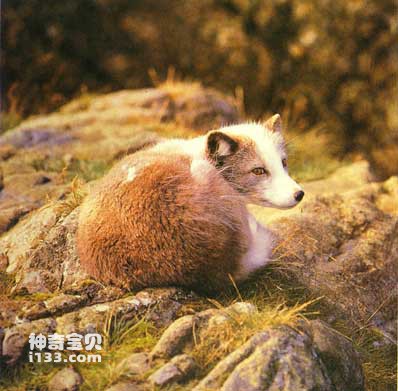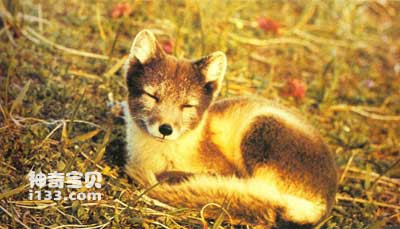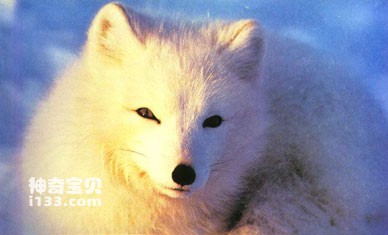The Arctic fox belongs to the canidae family, with a narrow forehead, pointed snout, round ears, fluffy tail hair, and a white tip.

Foxes are the real masters of the Arctic grasslands. Not only do they live here for generations, but they have almost no natural enemies except humans. Therefore, before the outside fur traders arrived in the Arctic, the foxes really lived a free and carefree life. Although they are unable to attack large herbivores like reindeer, they can capture small birds, pick up bird eggs, hunt rabbits, or fish for molluscs on the beach to satisfy their hunger. In autumn, they can also change their taste and go to the grass to find some berries to eat to supplement the necessary vitamins for the body.

Foraging in the snow
The main food supply for foxes still comes from lemmings. When encountering a lemming, the arctic fox will jump up with extreme accuracy, pounce, pin the lemming to the ground, and devour it. Interestingly, when the Arctic fox smells the scent of lemmings in its nest and hears the screams of lemmings, it will quickly dig out the lemming nest under the snow. When it is almost done, the Arctic fox will suddenly Jumping high, using the power of the jump, he used his legs to collapse the rat nest made of snow, catching the entire nest of lemmings in one go and eating them one by one.

arctic fox in summer
The number of Arctic foxes fluctuates with the number of lemmings. Usually, the low peak years when lemmings die in large numbers are the peak years of Arctic fox numbers. In order to make a living, Arctic foxes begin to move away from their hometowns; at this time, A disease called "Crazy Dance" is inexplicably prevalent among foxes. This disease is caused by the virus invading the nervous system. The sick Arctic fox will become extremely agitated and excited, often unable to control itself, running around and even daring to attack passing dogs and wolves. Most of those who got the disease died in the first winter, with as many as two corpses per square kilometer. Local hunters harvested the fur from the fox carcasses.

arctic fox in winter
Arctic foxes are covered in long, soft and thick fur. Even if the temperature drops to -45°C, they can still live very comfortably. Therefore, they can survive in the harsh Arctic environment for generations. Although people do not have a good impression of foxes themselves, they are well aware of the value and usefulness of fox furs. People with high status and wealth are honored and prosperous by wearing fox fur coats. The quality of fox fur also varies. The further north you go, the better the quality of fox fur is, the softer the fur, and the higher the value. Therefore, Arctic fox has naturally become the target of people's hunting.
animal tags:
We created this article in conjunction with AI technology, then made sure it was fact-checked and edited by a Animals Top editor.